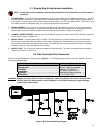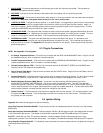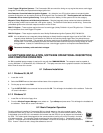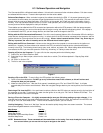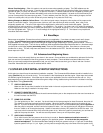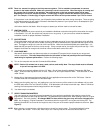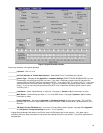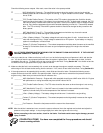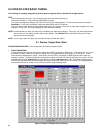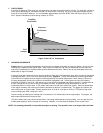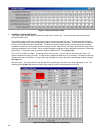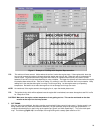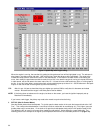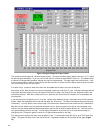
25
Check the following sensor outputs. After each, record the value in the space provided.
¨ __________MAP (Manifold Air Pressure) – The manifold air pressure when the engine is not running should be
between about 88 and 94 with the engine not running. In higher elevations it will be lower. Possibly as
low as 75-80.
¨ __________TPS (Throttle Position Sensor) – The position of the TPS needs to be greater than 5 with the throttle
closed and when the throttle is fully opened, it must be less than 255. As the throttle is opened, the TPS
value should evenly increase from a low to a high value. There is not a specific value or voltage it needs
to be at. But, there are parameters that must be entered depending on what it is. These will be entered
later. The TPS on Holley TBI and MPI systems should not need to be changed as they come from the
factory preset.
¨ __________MAT (Manifold Air Temp (F)) – The manifold air temperature should be very close to the actual
temperature of the air when the engine is off and cold.
¨ __________V Bat – (Battery Voltage) – The battery voltage should not be less than 12 volts. It should be over 13.5
volts with the engine running. Proper voltage is essential to an EFI system. If your battery or charging
system is not adequate, it must be fixed.
¨ __________Coolant (F) (Coolant Temperature) – The coolant temperature should be about the same as the manifold
air temp (or it should be close to the same as your temperature gauge) if the engine has not been
running.
ALL OF THESE SENSORS MUST BE WORKING FOR THE ENGINE TO RUN AND OPERATE. IF THEY ARE NOT
READING CORRECTLY, FIND OUT WHY.
11. Now, try to start the car. Make sure the key is off, turn it on, let the fuel pump prime until pressure is built, and start the
car. You should hear the pump speed slow down when the system is pressurized. If the base map is close, it should
immediately fire and run. If it does not fire or stay running refer to the Basic Tuning-Section 8.0. You should not and do
not want to move the gas pedal when trying to start the vehicle.
12. Make sure that the fuel is not excessively rich so much as to damage the engine or catalytic converters. The most
obvious sign of this is black smoke coming from the exhaust. If it is, shut it off and refer to the Basic Tuning-Section 8.0.
13. If the engine seems to be operating fairly smoothly, check fluids and check for leaks. Recheck the following sensor
outputs at idle and record the values in the space provided. Now is a good time to recheck the fuel pressure with the
engine running. Make sure you remove the vacuum reference line.
¨ __________MAP (Manifold Air Pressure) – Engines with mild camshafts should have a MAP value of 20-40. Engines
with performance or racing camshafts may have a MAP value of 40-70.
¨ __________TPS (Throttle Position Sensor) – The TPS value should be the same as when the engine is not running.
¨ __________MAT (Manifold Air Temp (F)) – If the MAT sensor is located in the intake manifold as with Holley
systems, it should slowly rise as the temperature of the intake air increased.
¨ __________V Bat – (Battery Voltage) – The battery voltage should be over 13 volts with the engine idling.
¨ __________Coolant (F) (Coolant Temperature) – The coolant temperature should gradually increase as the engine
warms up.
¨ __________Fuel Pressure – Record the fuel pressure with the vacuum line disconnected.
NOTE: After the vehicle is started and runs, remove the vacuum reference line to the regulator and recheck and adjust the
pressure to the proper settings. It may change slightly from when the engine was not running.
Before proceeding to the next section, check for fuel leaks. Fuel leaks could cause engine damage, personal
injury, or death.
CONGRATULATIONS! You have now completed the fire-up procedure and should
have a running vehicle.



